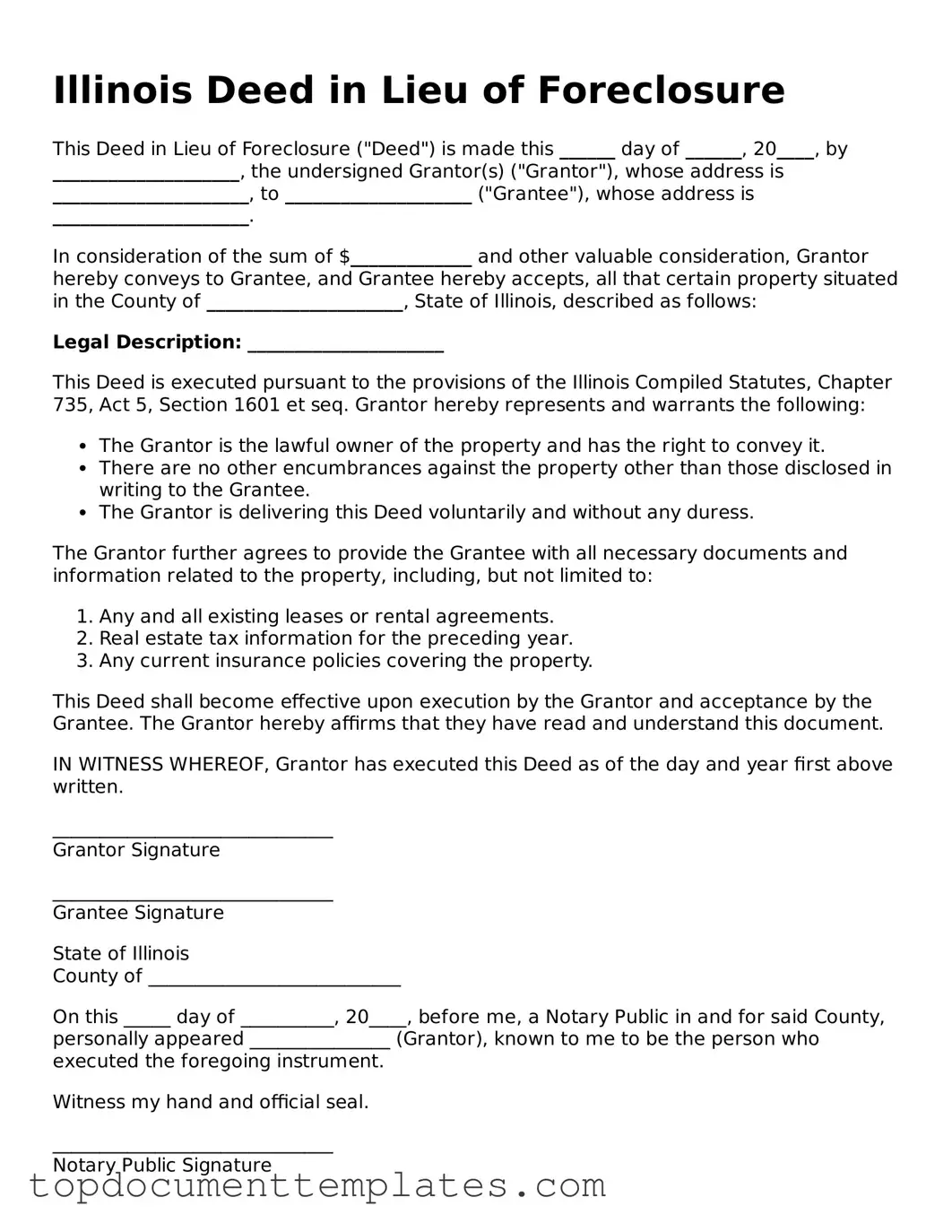Valid Deed in Lieu of Foreclosure Form for Illinois State
A Deed in Lieu of Foreclosure is a legal document that allows a homeowner to transfer ownership of their property to the lender to avoid foreclosure. This process can provide a more straightforward resolution for both parties involved, helping the homeowner to mitigate the impact of foreclosure on their credit. If you’re considering this option, you can start by filling out the necessary form by clicking the button below.
Open This Form
